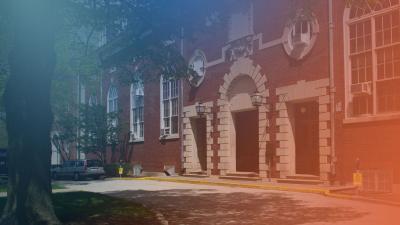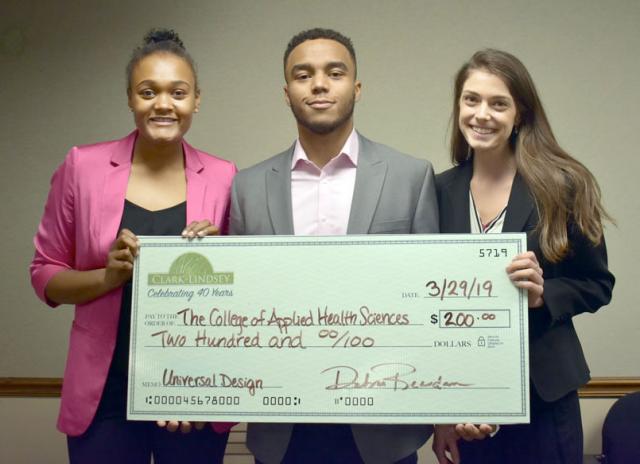
E-News Spring 2019
I-LEAP Students Shine with Universal Design

(L-R) Nicole Taylor, Christian Nielsen, and Marissa Tassone created an award-winning design for Clark Lindsey Village's inaugural Universal Design Competition.
Three students in the College of Applied Health Sciences finished second in the inaugural Clark-Lindsey Universal Design competition, in which they were tasked with designing a living space that supports independence and well-being regardless of age or ability.
The students are Nicole Taylor, Christian Nielsen, and Marissa Tassone. Taylor is a senior studying kinesiology, while Tassone is a senior in the Interdisciplinary Health Sciences program. Nielsen is a sophomore in Recreation, Sport and Tourism.
All three are members of the Mannie L. Jackson Illinois Academic Enrichment and Leadership Program (I-LEAP), which is open to AHS undergrads who are first-generation students, students from underrepresented groups, student athletes, and those recognized by the President Awards Program (PAP) and Educational Opportunities Program (EOP).
The competition was open to all Illinois students, who were allowed to form teams of two to four students. I-LEAP director April Carter put the I-LEAP team together.
“We talked about the people who could handle it. We know course loads, so we looked at all of that and felt this was a good fit,” Carter said, adding that she helped advise the students, none of whom has a design or engineering background. The team also was advised by an architect at NASA.

The AHS team presented their revised floor plan to a judging panel that included Clark Lindsey residents and community members.
Clark-Lindsey Village, a retirement community in Urbana, tasked the students with redesigning a 564-square-foot, one-bedroom apartment so that it could be used by everyone, not solely people with disabilities, and included products compatible with assistive technology. The teams had to stay within a $50,000 budget and were judged on innovation, cost-effectiveness, aesthetics, and more.
Nielsen said the budget was more than generous. He acknowledged that he and his teammates lacked a design background, but said that allowed them to try different strategies.
“Most of the teams in the competition approached the project from an architectural or industrial design perspective,” he said. “We wanted to approach it from the perspective of how things in your house can affect your mental and physical health, rather than just adhering to guidelines about how high off the ground something needed to be or how wide walkways should be.” He said that his teammates’ coursework and research related to aging helped them to consider how design choices might affect an older adult trying to navigate the room versus a younger person in a wheelchair. “We really tried to emphasize the word ‘universal’ in our design,” he said.
The trio won $200 for its second-place finish, and Carter said she was proud.
“They were the only students to participate that were not architects, industrial designers, or engineers. It is a huge accomplishment for students in health-related fields to come in second in a design competition,” she said.
